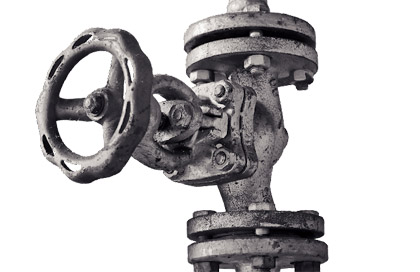Main Water Shut-off Valve: Where is it?


Plumbing emergencies can strike at the worst possible moments. Imagine enjoying a peaceful evening at home, only for the sound of trickling water to disrupt the tranquility. Ignoring the strange gurgling sound from under the sink or dripping water from your fire sprinkler system could lead to a plumbing catastrophe.
Here's where your main water shut-off valve comes in to save your home from water damage. The valve serves as the master control for your home's water supply. Turning it off lets you stop the water flow to different fixtures as you assess the situation or call in a plumber.
Knowing how to find the main water shutoff as a homeowner, homebuyer, or real estate agent ensures you can easily and quickly access it. Below is an extensive guide to help you locate this essential component of your home's plumbing system.
There are several common locations you can explore around your home to locate the main water shut-off valve. These places include:
In many homes, especially older ones, the main water shut-off valve is in the basement or crawlspace. Look along the interior foundation walls, where the main water pipe enters your house from the street. The shut-off valve will usually be near the entry point, either on the main water line or nearby.
The mechanical room is a common inclusion in newer constructions or condominiums. Houses with a slab foundation may lack basements or crawlspaces and have this dedicated space for mechanical equipment and control panels. You can find the main shut-off valve near the water heater, furnace, or pressure tank.
In areas with warm climates, you'll find the main water shut-off valve located on the exterior wall of your home. Since the temperature doesn't fall below the freezing point, there isn't a need to keep the shut-off valve indoors or buried below the freezing line.
Search for a metal or plastic cover labeled water shut-off or a similar indication near ground level. The sign may be near the washing machine, laundry hookups, or water meter, as this is where the water line enters the house from the ground.
In some homes, the main water shut-off valve may be outdoors near the curb. Look around the sidewalk or yard for a marked panel or meter box flush with the ground. You may need a wrench or specific key to open the box and access your shut-off valve.
The main water shut-off valve is often near the pressure tank or well pump for homes with a private well. It may be inside a protective enclosure or attached directly to the main line. This valve directly regulates water flow from the well into your house.
It's important to understand the different types you might encounter and how to operate them effectively. The primary valve near the water meter controls the entire water supply entering your house. Meanwhile, smaller shut-off valves often exist where individual supply lines branch off to faucets, toilets, and other water appliances. These valves come in a range of sizes to suit your purpose.
The valves often function using either of two mechanisms. One can have a rotating internal component that controls water flow or a gate with a sealing mechanism that squeezes shut to stop the flow. Some of the most common shut-off valves and ways to turn them off include:
If you cannot locate your main water shut-off valve after thorough searching, there are a few options. First, check your home's inspection report or consult a qualified plumber to assist in locating the valve. Contacting your local water utility company for assistance may sometimes be necessary. Consider installing a secondary emergency shut-off valve that is easier to access in extreme cases.
Knowing where your main water shut-off valve is located is essential for preventing potential water damage disasters. By familiarizing yourself with the different valve types and shut-off procedures, you can react appropriately to plumbing emergencies. In addition, keeping these areas accessible and well-labeled for easy identification ensures quick accessibility when needed.

Coverage not available in CA, WA and HI